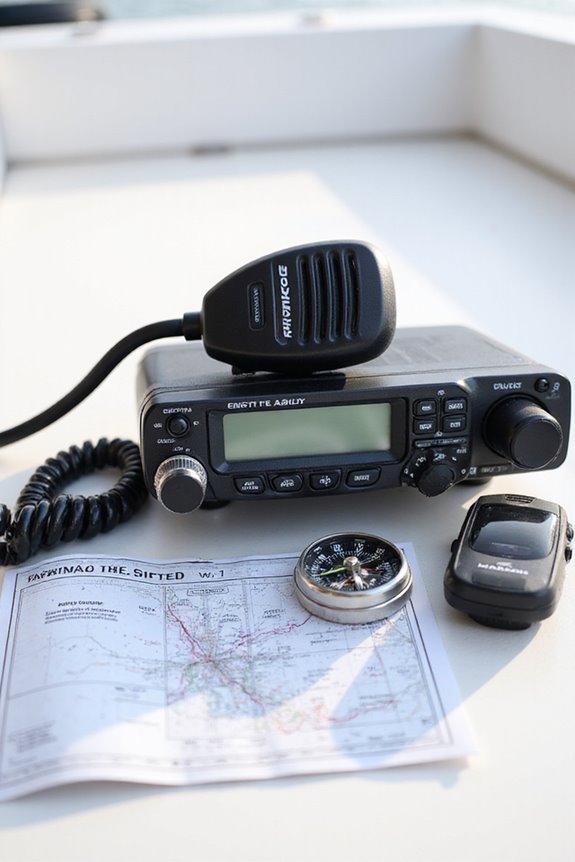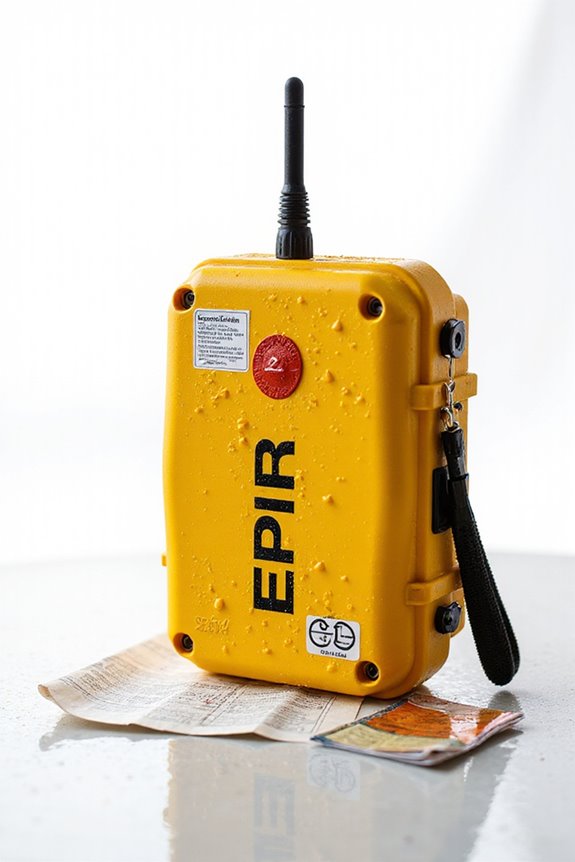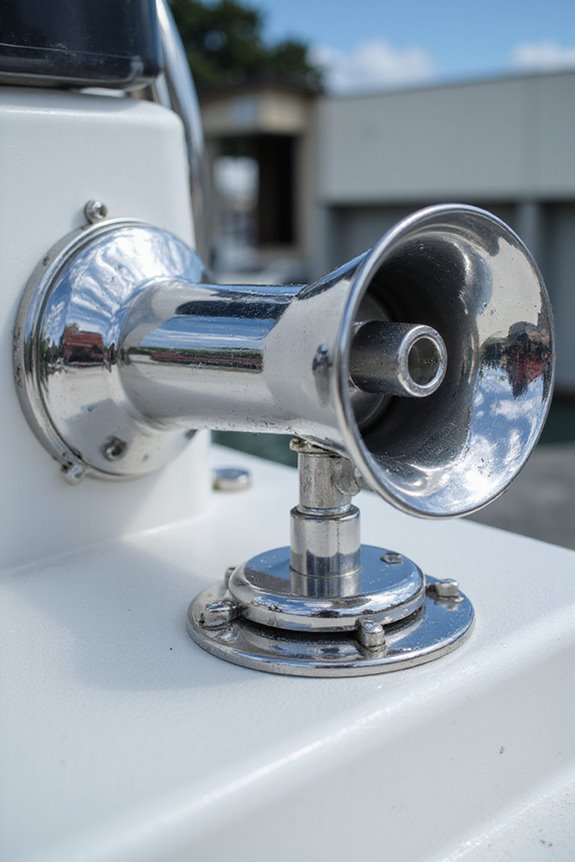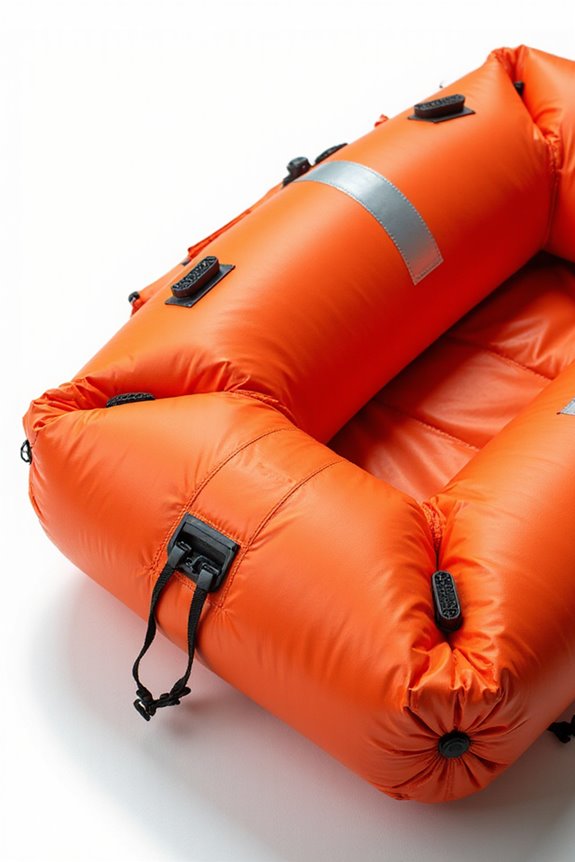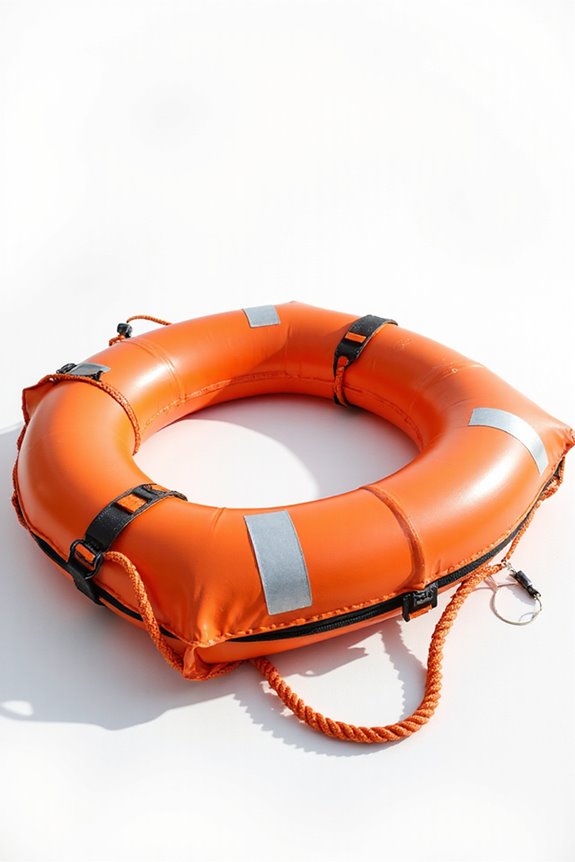We all know communication with your boat captain isn’t just small talk—it’s essential for safety and smooth sailing. Using clear, plain English helps avoid mix-ups, while active listening guarantees everyone’s on the same page—you don’t want to miss a critical command over the engine’s roar! Non-verbal cues and standardized phrases fill in the gaps when language barriers pop up, and quick checks keep the whole crew confident and connected. Curious how mastering these tips makes for a safer, more enjoyable voyage?
Key Takeaways
- Use clear, simple language and confirm messages to avoid misunderstandings with your boat captain.
- Practice active listening by focusing fully and summarizing instructions to ensure clarity.
- Employ standardized communication protocols, such as SMCP, to facilitate understanding on multicultural crews.
- Use non-verbal cues like hand signals to enhance communication in noisy or challenging environments.
- Maintain open communication channels and regular check-ins to build trust and teamwork with your captain.
Importance of Clarity in Communication
Even though communicating clearly with your boat captain might sound like a no-brainer, it’s easier said than done—especially when your crew speaks different languages or comes from varied backgrounds. We all know how confusing jargon can be, right? That’s why one of the biggest clarity benefits comes from using plain English and avoiding technical terms unless absolutely necessary. When we do need to use them, quick explanations or glossaries really help everyone stay on the same page. Communication strategies like confirming messages guarantee that nothing gets lost in translation—even between shifts. Translation tools and multilingual templates bridge language gaps, making certain instructions are understood by all skill levels and nationalities. In the end, clear communication isn’t just nice to have—it’s essential for safety and teamwork on board.
Utilizing Active Listening Techniques
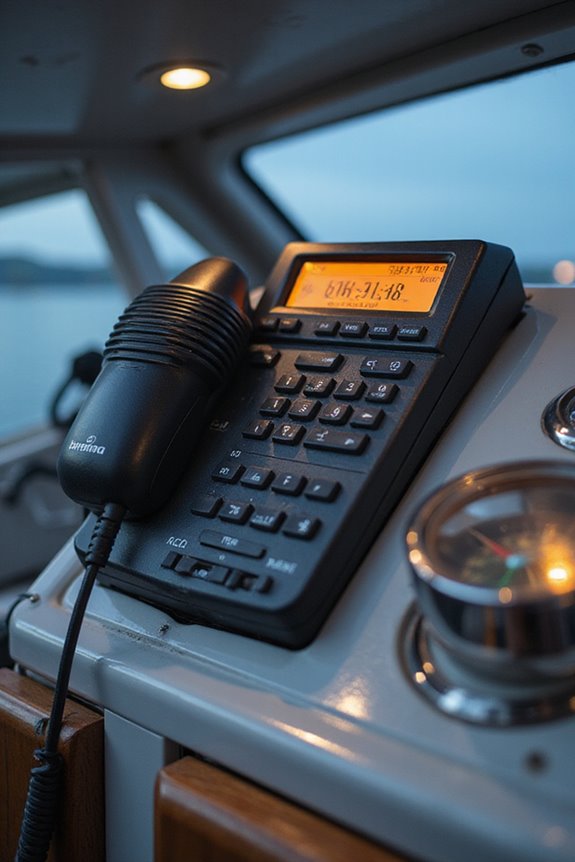
While clear speaking is essential, we all know that listening well is just as important—especially when communicating with your boat captain. That’s where active listening strategies come in handy. By fully focusing on the speaker, maintaining eye contact, and offering quick nods, we signal that we’re genuinely engaged. Ever tried talking while someone’s distracted by their phone? Exactly—communication challenges skyrocket. Avoiding interruptions and giving feedback, like summarizing key points, helps avoid misunderstandings that could turn into real headaches at sea. Plus, active listening builds trust among the crew, making teamwork smoother and the whole voyage safer. So, next time you chat with your captain, let’s practice these techniques together—it’s a small effort with a big payoff, especially onboard where clarity can literally save lives.
The Role of Clear and Simple Instructions
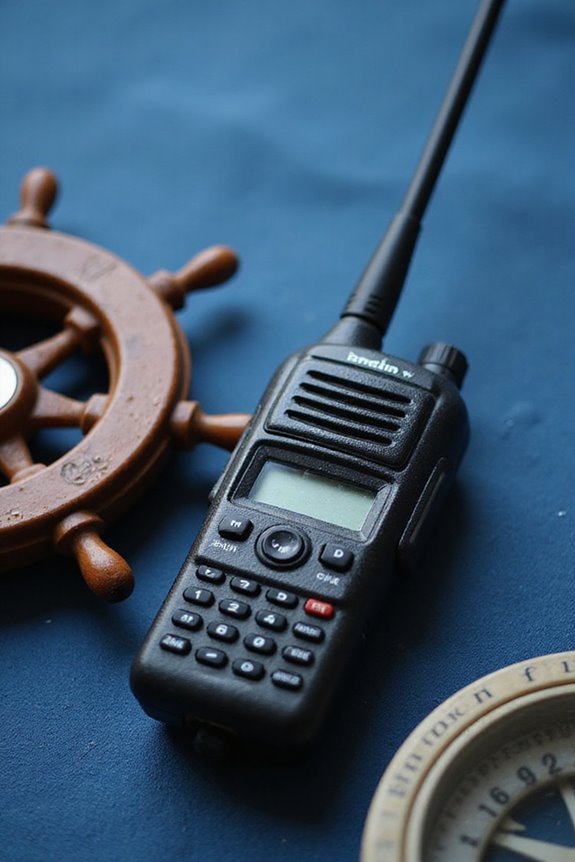
Since clear and simple instructions are the backbone of smooth sailing, let’s talk about why they matter so much onboard. When we follow effective guidelines and use concise messaging, we cut down on misunderstandings that can lead to mistakes—or worse, accidents. Ever tried giving directions with too much jargon? It’s like speaking another language! Using straightforward language helps every crew member, especially in multicultural teams, feel included and confident in their tasks. Plus, in critical moments, there’s no time for confusion. Clear instructions build trust and keep operations running like clockwork. So, together, by sticking to simple, precise commands, we create a safer, more efficient environment—where everyone’s literally on the same page. After all, isn’t that the best way to navigate the waves?
Enhancing Messages With Non-Verbal Cues
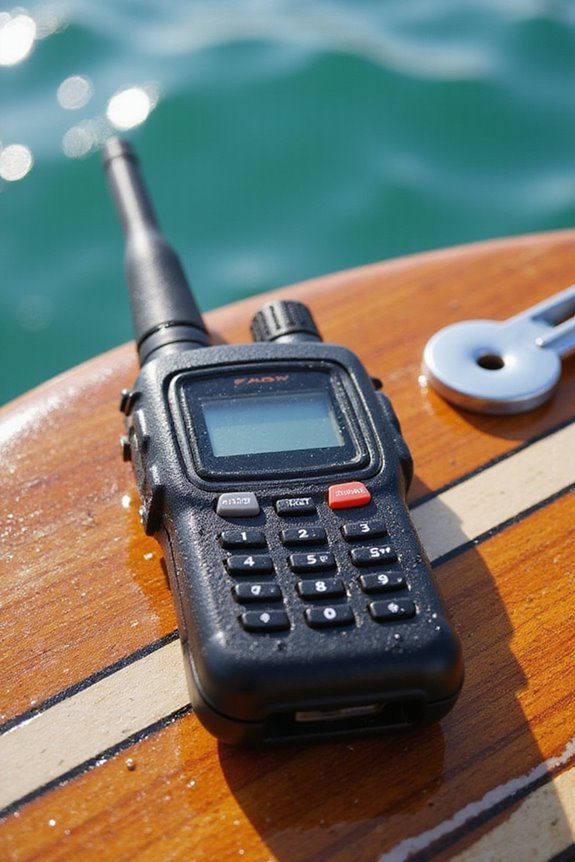
Quite a few of us might overlook just how powerful non-verbal cues can be when communicating aboard a boat, yet they’re absolutely essential. Think about it: when engine noise drowns out voices or language barriers pop up, non verbal signals like hand gestures and body language become our best friends. They help us pass on clear instructions and warnings quickly, reducing confusion and boosting safety. Have you noticed how experienced crew members nod or point confidently? That’s body language doing its job, creating a shared understanding without a single word. While these cues don’t replace talking, they improve teamwork and cut down errors, especially in challenging conditions. So, next time you’re on deck, watch closely—these silent signals speak volumes, don’t they?
Implementing Standardized Communication Protocols
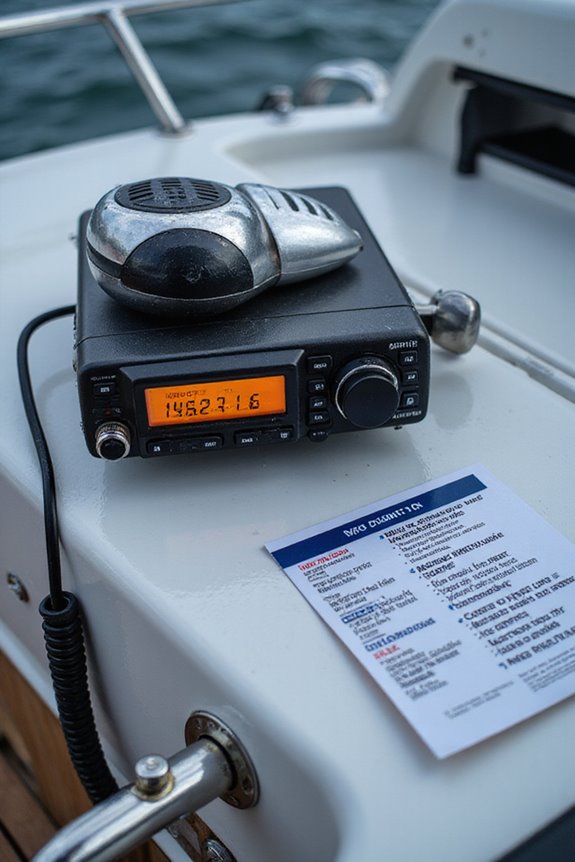
Though we might think clear communication is just about talking, aboard a boat it’s actually a bit more complex—and that’s where standardized communication protocols come into play. These standardized procedures, like the Standard Marine Communication Phrases (SMCP), help us avoid confusion, especially when working with crews from different countries. Ever wonder how vessels stay coordinated across oceans? Universal English guarantees everyone’s roughly on the same page, while regulations from bodies like the IMO and ITU set the rules for frequencies and equipment. With safety protocols grounded in SOLAS and tools like GMDSS, we’re not just chatting; we’re guaranteeing quick, clear responses in emergencies and smooth operations otherwise. So yes, those “codes” and “phrases” aren’t just for show—they keep us all sailing safely together.
Confirming Understanding Through Feedback
While clear communication is the backbone of any successful voyage, confirming understanding through feedback is where the real magic happens. We rely on verbal feedback—like repeating instructions or asking questions—to make sure everyone’s on the same page. It’s especially important in noisy settings when voices need a little boost. But let’s not forget non-verbal feedback—nods, eye contact, or even a thumbs-up—that quietly confirms comprehension without a single word. Sure, non-verbal cues can be tricky to read sometimes; is that a nod or just a clever sailor’s daydream? Combining both gives us the best shot at avoiding missteps. After all, we’re a team out there, and checking in with each other keeps our journey smooth and safe.
Overcoming Language Barriers on Board
Because our crews often come from all over the globe, overcoming language barriers on board is no small feat. We understand misunderstandings can happen, especially when multiple languages mix. That’s why we emphasize multicultural training to help everyone appreciate different communication styles and avoid confusion. Plus, regular language assessments keep our crew’s skills sharp, so instructions come through loud and clear. Sure, English is the working language, but accents and cultural differences still sneak in, creating challenges we tackle together. Wondering how we keep things smooth? It’s about building trust, patience, and a shared commitment to safety. When we invest in training and assessments, we’re not just learning words; we’re strengthening teamwork and making sure everyone feels part of the same crew.
Using Visual Aids and Signage Effectively
Anyone who’s spent time on a boat knows how important clear communication is, especially when words alone can fail us—say hello to visual aids and signage. These tools bridge language gaps and make sure everyone’s on the same page, quite literally. With visual signage effectiveness boosted by universal symbols and color codes, we immediately recognize warnings or directions—even in tricky conditions. Ever wondered how emergency communication strategies keep us safe when seconds count? That’s where low location lighting and well-placed escape route signs come in, guiding us reliably during emergencies. Plus, durable, weather-resistant signs hold up against salt, sun, and sea spray, ensuring messages don’t fade away. So, next time you spot a green lifejacket icon or a red prohibition sign, remember—it’s all designed to keep our crew connected and safe, no matter where we sail.
Maintaining Safety Through Effective Messaging
If we want to keep everyone safe on board, nailing effective messaging is an absolute must. Clear communication starts with reliable communication equipment—think VHF radios that link smoothly with navigation systems and alarms. But having gear isn’t enough. How we structure messages matters just as much. Using bullet points or numbered lists helps everyone quickly grasp what’s needed—no guessing games here! Precise language and repeating key info prevent misunderstandings that could lead to big problems. Plus, confirming messages guarantees everyone’s on the same page. Remember, during critical moments, distractions like phone calls are off-limits to keep focus sharp. So, by combining well-chosen tools with clear message structure, we create an environment where safety isn’t just a goal—it’s a shared habit we all rely on. Additionally, using a handheld VHF radio with emergency call functionality can provide essential communication during distress situations.
Building Team Cohesion Through Regular Communication
When we communicate regularly and clearly on board, it’s like adding another layer of strong glue that holds our team together—even when the seas get rough. Regular check-ins and pre-shift briefings don’t just keep us informed; they boost crew engagement, making each member feel heard and valued. Ever tried a team building activity after a long day at sea? It breaks the ice and strengthens bonds in ways simple orders can’t. We also lean on visual tools and standardized phrases to cut through language barriers, ensuring everyone’s on the same page. By weaving these habits into daily life, we create a culture where trust and collaboration thrive. After all, the smoother we communicate, the better we work—and the better we work, the safer and more enjoyable our voyage becomes.
Frequently Asked Questions
How Often Should I Update the Captain on My Position During Navigation?
When steering, we should provide position updates based on navigation frequency—more often near hazards or in confined waters, typically every 15 to 60 minutes in open seas. This keeps us all safely connected and aware together.
What Is the Best Way to Report Unexpected Mechanical Issues to the Captain?
When unexpected storms arise beneath the surface, we rely on sharp mechanical issue reporting and captain communication strategies. Let’s keep our bond strong by promptly and clearly relaying issues, ensuring safety and unity in every maneuver we share.
How Can I Discreetly Communicate Concerns to the Captain Without Disrupting Others?
We use hand signals and discreet gestures to quietly share our concerns with the captain without disrupting others. This helps us stay connected and respected, ensuring we’re all part of the team while maintaining smooth communication.
Are There Specific Codes for Silent Communication at Night?
Yes, we’ve got specific codes using hand signals and light flashes for silent night communication. These discreet signals help us stay connected and coordinated without disturbing others, making us feel united and secure during vessel operations.
How Do I Handle Communication When the Captain Is Unavailable or Out of Reach?
When the captain’s unreachable, it feels like the ocean itself pauses, but we rely on emergency procedures and alternative contacts. Together, we uphold clear communication, ensuring no voice is lost and every challenge finds a trusted response.

